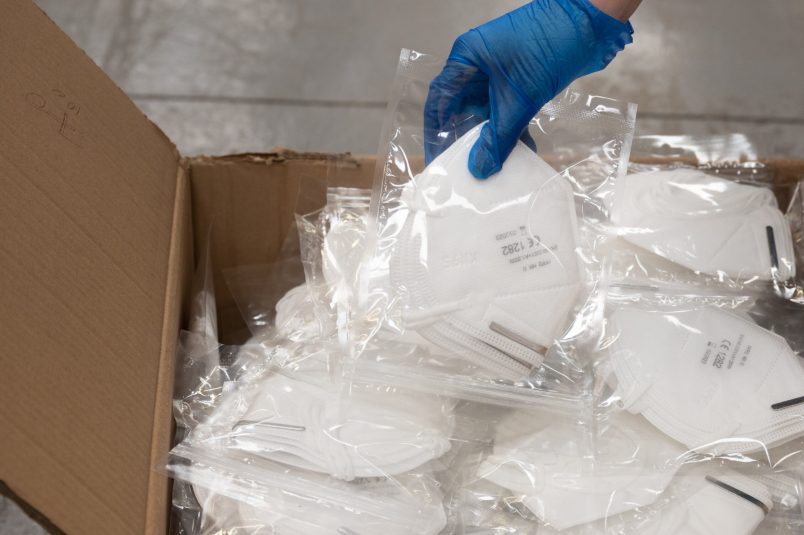There’s a lot of confusion as the country struggles to meet overwhelming demand for N95 masks and other much-needed pieces of protective medical gear.
But as state and local governments have taken to paying a premium for their own bulk orders, anecdotal reports continue to surface that another player may have stepped in to stop it, often with apparently inscrutable reasons for doing so: the federal government.
A New Jersey county executive said that the feds seized 35,000 masks ordered by her county last week, while Massachusetts officials said that 3 million masks had been seized in the Port of New York.
TPM has chronicled this problem, while The New York Times reported on Monday that it was at least partly due to confusion in Project Airbridge — the federal effort to shepherd medical goods into the U.S. for sale by private distributors.
While it’s still difficult to nail down the specifics of what the federal government is doing, there are different ways this may be happening, with each signaling a different problem — or policy:
CUSTOMS SEIZES MEDICAL SUPPLIES AT THE BORDER
Since the pandemic hit, the requirements for mask importation have changed rapidly, and guidance about what mask is acceptable for what use has begun to vary agency to agency. As a result, the chances for customs officials to impound a shipment have gone up.
FEMA SEIZES MEDICAL SUPPLIES UNDER THE DPA
The other possibility that has aroused suspicion is the Defense Production Act, a Korean War-era law that the Trump administration has invoked to prioritize production of medical protective equipment like masks and gowns as well as mechanical ventilators.
Some reports of the cargo seizures have suggested that while customs has impounded certain medical supplies, the ultimate destination may be FEMA, for further distribution.
Craig Fugate, the FEMA director under President Obama, told TPM that invoking the DPA would give FEMA “primacy on getting the supplies, and then hopefully making priority-based decisions to redistribute it.”
“This is one of the challenges of trying to take scarce resources like PPE,” he said. “It’s not what I would call a surgical, precision instrument — it’s more like a blunt instrument.”
The law’s details suggest that it gives the government two avenues for seizing equipment that has already been produced, but remains in the possession of private companies.
They are two authorities embedded in the law: one called priority rating, and anther devoted to allocation.
The government tends to use the priority rating to force companies to sell needed products, according to David Kaufman, a former FEMA associate administrator for policy who is now a vice president at CNA, a national security-focused think tank.
In these contracts, the government becomes a kind of mandatory purchaser, while paying the seller market value. Any item deemed as being necessary for national security can be seized under the law.
“Putting a priority rating on a given contract says that the government gets the first available purchase,” he said.
Any private purchasers would get “dumped into later in line” for whatever the seized good may be.
FEMA REDISTRIBUTES MEDICAL SUPPLIES UNDER THE DPA
The other potential option — allocation — has rarely been invoked, Kaufman said, but could fit the current circumstances. It allows the government to seize and reallocate needed items at its discretion.
“You’ve got more need than you have supply and some areas have a more critical need than others — with a scarce commodity you would want to try to redirect that,” Kaufman said.
The law gives the federal government broad latitude to direct portions of the economy, with relatively limited oversight. The Defense Production Act Committee — composed of government officials responsible for implementing the law — delivers an annual report to Congress.
“Those are lagging requirements,” Kaufman said. “It’s up to the policymakers.”
The problem speaks to the difficulties that states and local governments are having in acquiring medical supplies as cases reach their projected peak levels around the country.
The glut of need on the scale that the country faces — and potentially paired with the federal government invoking the DPA as a response — highlights the Trump administration’s failure to prepare for the crisis, which many foresaw.
“By the time you identify a need, the DPA isn’t quite as effective as if you turn it on early,” Fugate said. “The earlier you turn it on, the fewer issues you have based on priorities.”






